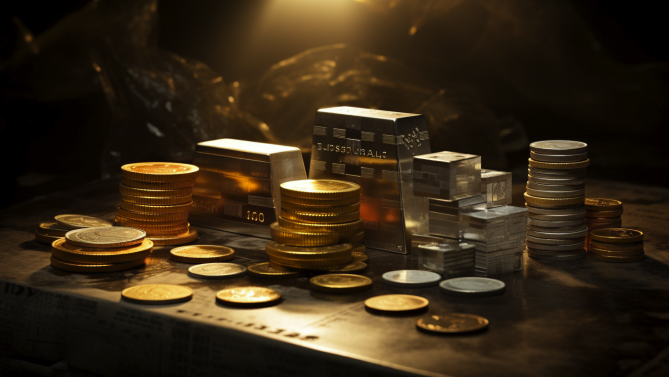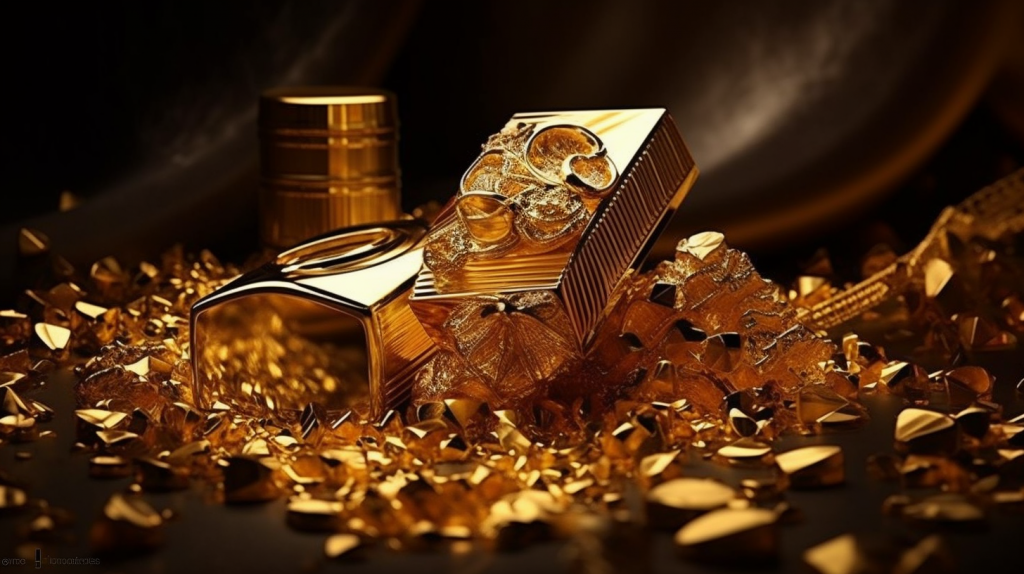Alchemy of Wealth: Diversifying Portfolios With Precious Metals IRA Companies
Are you looking for a way to diversify your investment portfolio and safeguard against economic uncertainties? Look no further than precious metal IRAs. These precious metals ira companies allow you to invest in gold, silver, platinum, and other precious metals, offering a hedge against inflation and stock market volatility.
Diversifying your portfolio with precious metal IRAs can provide added stability and potential long-term growth. But where do you start? In this article, we will guide you through the alchemy of wealth by explaining the benefits of diversifying portfolios, exploring different precious metal options, and helping you choose a trustworthy IRA custodian.
We will also delve into tax considerations and strategies for maximizing returns with precious metal IRAs. Get ready to unlock the power of these alternative investments and take control of your financial future!
Understanding Precious Metal IRAs
Are you curious about the benefits of investing in a Precious Metal IRA? Well, let me tell you all about it.
A Precious Metal IRA is a self-directed individual retirement account that allows you to hold physical precious metals like gold, silver, platinum, and palladium. It’s a great way to diversify your investment portfolio and protect your wealth against inflation and market volatility.
With a Precious Metal IRA, you have the freedom to choose from a wide range of approved bullion coins and bars. Plus, you can enjoy potential tax advantages such as tax-deferred growth or even tax-free withdrawals if certain conditions are met.
So why wait? Start securing your future today with the alchemy of wealth through diversifying your portfolio with a Precious Metal IRA.
Benefits of Diversifying Portfolios
Expand your financial horizons by adding a variety of investments to your portfolio, allowing you to reap the benefits of a well-diversified strategy.
One major benefit of diversifying portfolios is that it helps reduce risk. By investing in different assets such as stocks, bonds, and precious metals like gold and silver, you can spread out your risk across various sectors and industries. This means that if one investment performs poorly, the others may offset those losses and help protect your overall wealth.
Diversification also offers potential for higher returns. Different asset classes tend to perform differently at different times, so having a mix of investments can increase the likelihood of capturing positive returns over the long term.
So why limit yourself? Embrace diversification and unlock the full potential of your portfolio!
Exploring Different Precious Metal Options
Discover the allure of various precious metals, and let their timeless beauty and enduring value captivate your investment journey.
When exploring different precious metal options for diversifying your portfolio, you’ll find a wide range to choose from.
Gold is often seen as a safe haven during times of economic uncertainty, with its strong track record of preserving wealth.
Silver, on the other hand, offers potential for both growth and industrial demand due to its versatile applications.
Platinum is known for its rarity and has historically been sought after by investors looking for long-term stability.
Palladium has gained attention in recent years due to its increasing use in the automotive industry.
Each precious metal brings unique characteristics that can add depth and balance to your investment strategy, providing an opportunity to protect and grow your wealth over time.
Safeguarding Against Economic Uncertainties
Protect yourself against economic uncertainties by investing in precious metals, which can act as a shield to safeguard your wealth and provide stability during turbulent times.
When the economy is uncertain, traditional investments like stocks and bonds may become volatile or lose value. However, precious metals such as gold, silver, platinum, and palladium have stood the test of time as safe-haven assets. These metals have intrinsic value and are not affected by inflation or currency fluctuations like paper money.
By diversifying your portfolio with precious metal IRAs, you can mitigate the risks associated with economic downturns and protect your hard-earned money. Whether it’s a stock market crash or a recession, having a portion of your investment in precious metals can help preserve your wealth for the long term.
Choosing a Trustworthy IRA Custodian
When choosing an IRA custodian, you’ll want to consider their reputation and track record in order to ensure the safety and security of your investments. Here are four important factors to keep in mind:
- Experience: Look for a custodian with a long history in the industry. Their expertise and knowledge can help guide you through any potential challenges.
- Regulatory Compliance: Make sure the custodian is fully compliant with all relevant regulations and laws. This will provide reassurance that your investments are being handled responsibly.
- Client Reviews: Research what other clients have said about their experiences with the custodian. Positive reviews can indicate a trustworthy and reliable service.
- Fees and Costs: Compare the fees charged by different custodians. While cost shouldn’t be the sole factor in your decision, it’s important to understand how much you’ll be paying for their services.
By carefully considering these factors, you can choose a trustworthy IRA custodian that will protect your precious metal investments effectively.
Tax Considerations for Precious Metal Investments
Now that you’ve learned how to choose a trustworthy IRA custodian, it’s time to delve into the tax considerations for your precious metal investments.
When it comes to investing in precious metals like gold or silver through an IRA, it’s important to understand the potential tax implications.
While contributions to a traditional IRA are typically tax-deductible, withdrawals are subject to ordinary income taxes. However, with a Roth IRA, contributions are made on an after-tax basis but qualified withdrawals are tax-free.
Keep in mind that if you decide to take physical possession of your precious metals from your IRA, it may trigger taxable events and penalties.
Consulting with a knowledgeable tax advisor can help ensure you make informed decisions and navigate the complex realm of taxes when diversifying your portfolio with precious metal IRAs.
Strategies for Maximizing Returns with Precious Metal IRAs
To enhance your investment potential and maximize returns, consider implementing strategic tactics within your precious metal IRA.
One effective strategy is to diversify your portfolio by investing in different types of precious metals. While gold is often considered a safe haven asset, other metals like silver, platinum, and palladium can provide additional opportunities for growth.
Another tactic to consider is timing your purchases strategically. Precious metal prices can fluctuate based on market conditions and economic factors, so buying when prices are low can potentially lead to higher returns in the future.
Additionally, staying informed about market trends and developments can help you make more educated investment decisions.
By employing these strategies, you can increase the profitability of your precious metal IRA and optimize your overall investment performance.
Conclusion
So there you have it, diversifying your portfolio with a precious metal IRA can be a smart move for safeguarding against economic uncertainties.
By understanding the benefits of diversification and exploring different precious metal options, you can maximize your returns and protect your wealth.
Just make sure to choose a trustworthy IRA custodian and consider the tax implications of your investments.
With these strategies in place, you’ll be well on your way to achieving financial security through the alchemy of wealth.…


